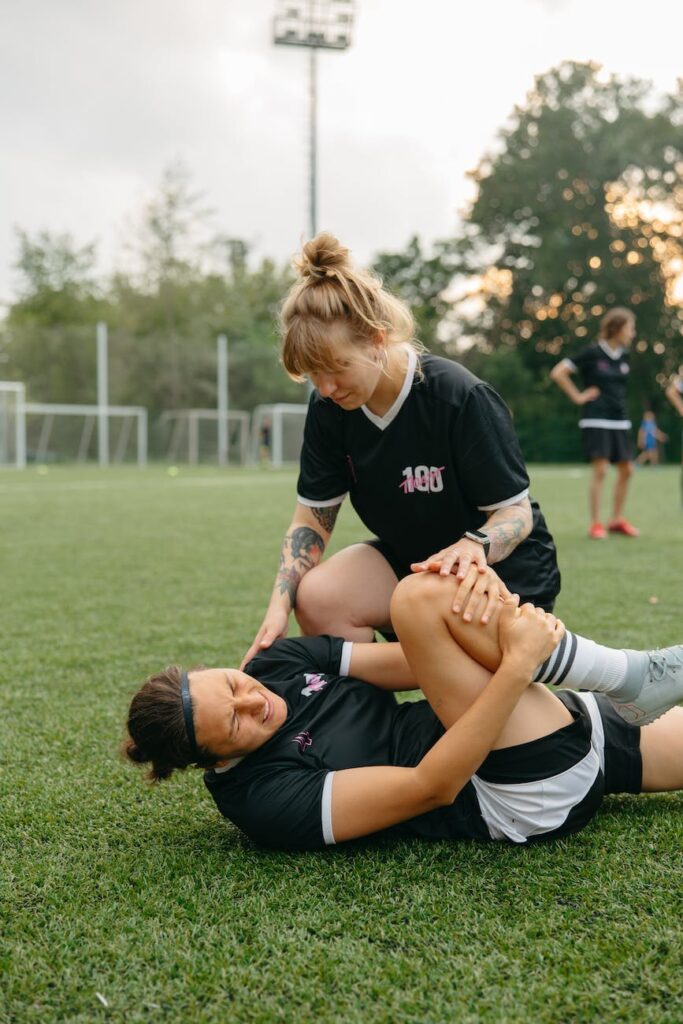Contents
Understanding Personal Injury Claims
To comprehend the nuances of personal injury claims in California, it is crucial first to grasp what personal injury claims are and the common types of cases that fall under this category.
Definition of Personal Injury Claims
Personal injury claims are legal disputes that arise when one person suffers harm from an accident or injury, and someone else might be legally responsible for that harm. They are typically formalized through civil court proceedings that seek to find others legally at fault through a court judgment. However, such disputes may also be resolved through informal settlement before any lawsuit is filed.
Common Types of Personal Injury Cases
There is a wide range of situations that can give rise to a valid personal injury claim. However, certain types of incidents lead to these claims more commonly than others.
Slip and Fall Accidents
Slip and fall accidents are among the most common types of personal injury cases. These accidents can happen anywhere, from grocery stores to private homes, and often result in injuries such as broken bones and head injuries. They are the leading cause of emergency room visits in the United States, making them a significant source of personal injury claims in California (Curtis Legal Group).
Dog Bites
Dog bite incidents account for a significant portion of personal injury claims in California, with the state having the highest number of such claims in the U.S. (Curtis Legal Group). The severity of injuries can vary, from minor cuts and bruises to more serious injuries such as fractures and disfigurement.
Medical Malpractice
Medical malpractice cases are also prevalent in California. These cases occur when a healthcare professional fails to provide competent and reasonably skilled care, and a patient is injured as a result.
Product Liability
Product liability cases involve injuries resulting from defective products. These cases can range from faulty car parts to dangerous pharmaceutical drugs, leading to a substantial number of personal injury claims each year in California.
The common injuries in personal injury claims in California include but are not limited to, broken bones, burns, internal bleeding, spinal cord injuries, neck and back injuries, disfigurement, loss of limbs, traumatic brain injuries, and post-traumatic stress disorder, often resulting from car accidents or serious slip-and-falls.
Understanding the type of personal injury case one is dealing with is crucial to ensure the appropriate steps are taken to resolve it. Whether you are filing a claim in California or elsewhere, it is beneficial to understand your state-specific laws and regulations.
The Legal Landscape in California
Navigating the legal landscape of personal injury claims in California is a crucial step in ensuring a successful claim. There are two key legal principles that potential claimants need to understand: the statute of limitations and the comparative fault system.
Statute of Limitations
In personal injury claims, the statute of limitations refers to the time limit within which a claim must be filed. In California, the statute of limitations for personal injury claims is generally two years from the date of the injury. However, there are exceptions for specific cases. For example, the time limits may be shorter in cases of medical malpractice or claims against government entities.
If the injury claim is against a government entity in California, there are strict requirements to provide notice within a much shorter period. Typically, a written claim must be filed within six months of the injury occurrence.
Understanding and adhering to these time limits is crucial for the success of a personal injury claim. Failing to file a claim within the prescribed time frame could result in losing the right to compensation.
Comparative Fault System
California operates under a comparative fault system. This means that if the injured party shares some responsibility for the accident that caused their injury, their compensation may be reduced by the percentage of fault assigned to them (Forbes).
For example, if a claimant is found to be 20% at fault for an accident, their compensation would be reduced by 20%. This principle applies even if the claimant is more at fault than the other party.
The comparative fault system underscores the importance of gathering and preserving solid evidence to support your claim. This includes not only evidence of the other party’s negligence but also evidence that demonstrates your own lack of negligence.
Understanding these key elements of the legal landscape can help individuals navigate personal injury claims in California more effectively. For more information on managing a personal injury claim, consider choosing the right personal injury lawyer to guide you through the process.
Dealing with personal injury claims in California involves a number of stages, each with its own set of procedures and requirements. Understanding these stages can greatly assist claimants in successfully navigating the claims process.
Initial Stages and Notice of Intent
The first stage in the claims process typically involves sending a notice of intent to sue to the person or entity you plan to sue. This notice serves as a formal declaration of your intention to pursue a personal injury claim against them. The requirements for this notice can vary depending on the type of case and the defendant involved (California Courts – Self Help).
It’s crucial to remember that a notice of intent to sue is not the same as filing a lawsuit. Rather, it is a preliminary step that may be necessary before a lawsuit can be initiated. In some cases, the notice may lead to a settlement without the need for a lawsuit. For more information on the difference between a settlement and a lawsuit, we recommend reading our article on settling vs. going to trial.
Gathering and Preserving Evidence
Once the notice of intent has been sent, the next stage involves gathering and preserving evidence. This is a critical step in the claims process, as the evidence you collect can significantly strengthen your personal injury claim. Evidence may include photos of the accident scene, images of your injuries, medical records, and written accounts of the incident (Citywide Law Group).
As you gather evidence, it’s important to keep everything organized and easily accessible. This includes keeping a record of all expenses related to your injury, such as medical bills and repair costs. It would be best if you also documented any loss of income resulting from the injury. For more information on how these factors can affect your claim, see our article on personal injury compensation and damages.
Navigating the personal injury claims process can be complex, and many claimants find it beneficial to seek guidance from legal resources or professionals. Hiring an attorney, for instance, can allow you to focus on your recovery while ensuring your claim is professionally managed. Many personal injury attorneys offer free consultations to help you find the best professional for your case. For more tips on selecting an attorney, check out our article on choosing the right personal injury lawyer.
Calculating Damages in Personal Injury Claims
In the realm of personal injury law, damages refer to the monetary compensation sought by the victim from the party responsible for their injuries. In personal injury claims in California, these damages are typically divided into two main categories: economic and non-economic damages.
Economic Damages
Economic damages, often referred to as “special damages,” encompass quantifiable financial losses incurred as a result of the injury, including:
- Medical Expenses: Past and future medical expenses are indispensable in determining the value of a personal injury claim in California. These costs often include hospital bills, rehabilitation expenses, ongoing treatment costs, and potential future medical needs (Phoong Law).
- Loss of Income and Earning Capacity: This includes current lost wages and future earning potential if the injuries result in a reduced ability to work.
The severity of the injury and the length of recovery from bodily injuries play significant roles in affecting economic damages. A longer recovery often leads to a higher claim value, considering potential expenses like missed work, ongoing medical treatment, or physical therapy, which can contribute to a higher compensation award (Michelle Linka Law).
Non-Economic Damages
Non-economic damages, also known as “general damages,” are more subjective and relate to the non-financial impact of the injury on a victim’s life. These can include:
- Pain and Suffering: The physical discomfort and mental distress caused by the injury. The more severe the injury, the higher the potential compensation for pain and suffering.
- Loss of Enjoyment of Life: If the injury has resulted in a decreased quality of life or inability to engage in activities one used to enjoy, compensation may be awarded.
- Emotional Distress: Psychological impact, such as anxiety, depression, or post-traumatic stress disorder (PTSD), resulting from the injury.
Determining non-economic damages can be more complex due to their subjective nature. However, they play a critical role in the overall compensation awarded in a personal injury claim.
Understanding the calculation of damages is a crucial part of navigating personal injury claims. It’s essential to remember that liability and negligence significantly influence the value of a personal injury claim. Proving fault on the part of the responsible party is crucial for receiving compensation. If evidence shows negligence or recklessness, the victim may be awarded higher compensation, while contribution to the accident may lead to a reduced award (Michelle Linka Law). For more information on the factors that can impact your claim, see our section on insurance in personal injury claims.
Settlement vs. Going to Court
In personal injury claims, a pivotal decision often lies between a settlement or proceeding to court. Each option has its advantages and potential drawbacks, and understanding these can significantly influence the ultimate recovery from a personal injury claim.
Pros and Cons of Settlement
On one hand, settling a personal injury claim can offer many advantages. According to Citywide Law Group, 95% of personal injury cases are settled privately outside of court. This high percentage underscores the appeal of settlements, which often offer quicker resolutions and less legal expense than a trial.
Settlements also provide a degree of certainty, as both parties agree to the terms and avoid the unpredictability of a court verdict. However, settlements may result in lower compensation compared to successful court outcomes, and once agreed upon, they typically involve dropping the lawsuit, which can limit future legal recourse.
| Pros of Settlement | Cons of Settlement |
|---|---|
| Faster resolution | Potentially lower compensation |
| Less legal expense | Limited future legal recourse |
| Certainty of outcome | – |
Success Rates in Court
On the other hand, taking a personal injury claim to court can yield higher compensation, particularly in California, where the average personal injury settlement amount falls around $21,000, with a range between $14,321 and $28,215, according to Super Lawyer Doug.
Furthermore, the success rate for plaintiffs in personal injury cases in California is approximately 50%, and plaintiffs are nine times more likely to win the case in court than the defendant, as per Carl D. Barnes Law. However, going to court can be a lengthy and costly process, and there is always the risk of losing the case, leaving the plaintiff with no compensation.
| Pros of Going to Court | Cons of Going to Court |
|---|---|
| Potential for higher compensation | Longer process |
| Chance of setting a legal precedent | Higher legal costs |
| – | Risk of losing the case |
Choosing between a settlement and going to court is a decision that should be made carefully and preferably with the guidance of a knowledgeable personal injury lawyer. By understanding the pros and cons of each option, individuals can make informed decisions that best suit their circumstances and needs when navigating personal injury claims in California.
Role of a Personal Injury Lawyer
Navigating the legal landscape of personal injury claims in California can be complex and challenging. A personal injury lawyer can provide crucial support and guidance throughout this process.
Benefits of Hiring a Lawyer
Hiring a lawyer to handle a personal injury claim can offer numerous benefits. One key advantage is that it gives the victim time to focus on their recovery while ensuring their claim is professionally managed. This can be particularly beneficial in complex cases that involve multiple parties, extensive damages, or intricate legal issues (California Courts – Self Help).
A personal injury lawyer can also ensure that claims are filed within the appropriate timeframe, adhering to California’s statute of limitations for personal injury cases. Meeting these deadlines is crucial to preserving your right to pursue compensation (Citywide Law Group).
Another major benefit of hiring a lawyer is their ability to negotiate with insurance companies on behalf of the victim. Insurance companies often seek to minimize their liability and may propose settlement offers that are lower than what the victim may be entitled to. Having a skilled lawyer to negotiate can be crucial in determining a reasonable settlement amount (Carl D. Barnes Law).
Choosing the Right Lawyer
Choosing the right personal injury lawyer is a crucial step in the claims process. It’s important to select a lawyer who specializes in personal injury law and has a deep understanding of the specific laws and regulations in California.
Personal injury attorneys often offer free consultations to help clients find the best professional for their case (Citywide Law Group). During these consultations, you can discuss your case, learn about the lawyer’s experience and track record, and determine if they would fit your needs well.
When choosing a lawyer, consider their experience with cases similar to yours, their reputation, their communication style, and their fee structure. A good lawyer should be able to explain the legal process in a way that you can understand, guide you through the necessary steps, and advocate for your best interests.
For more information on choosing the right personal injury lawyer, check out our guide on choosing the right personal injury lawyer.
While California law allows individuals to represent themselves in a personal injury case, seeking legal advice or representation can greatly simplify the process and improve your chances of receiving fair compensation. Whether you hire a lawyer or handle the case yourself, it’s important to be well informed and prepared when navigating the process of personal injury claims in California.







